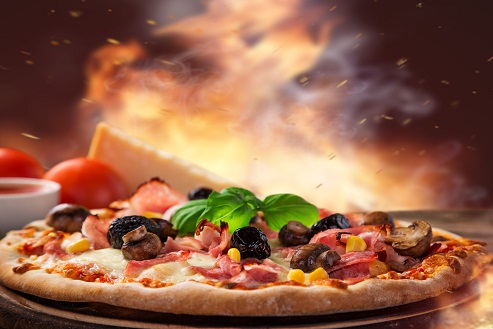Why gluten-free should not mean taste-free

Related topics
Food & Healthy Diet Innovation SMEs Innovation in SMEs Food security Germany Ireland Italy Swedendate: 04/08/2015
Project: Tasty and healthy gluten-free bakery pro...
acronym: GLUTENFREE
See also: CORDIS
While eating ‘gluten free’ products such as pizza, bread and pasta has in the past meant – rather drearily – having to sacrifice flavour, the GlutenFree project has demonstrated that this need no longer be the case. The project has opened the door to the development of commercially viable bakery and pasta products that are both nutritious and tasty, a breakthrough that promises to improve the lives of coeliac disease sufferers.
This lifelong condition is caused by the immune system reacting to gluten, a protein found in wheat, barley and rye. The disease currently affects around 1 in 100 people, who can also suffer vitamin and mineral deficiencies. This is often a result of the small intestine’s inability to properly absorb nutrients from food. Once diagnosed, the only treatment for coeliac disease is a gluten-free diet.
Food for families
“While coeliac patients were the main target group of this project, we also wanted to have positive implications on all family members,” explains project coordinator Juergen Bez of the Fraunhofer Institute in Germany. “People usually have their meals together, and this can complicate cooking together if a member of the family is a coeliac. The products we have created therefore aim to satisfy not just coeliacs, but people without gluten intolerance as well, so that families could truly eat together.”
This meant setting the bar – in terms of taste and texture – very high. “The project has been a gradual process,” says Bez. “But during our very final consumer tests (with both coeliac and non-coeliac patients), consumers who participated in early taste tests confirmed that certain gluten-free products have been significantly improved.”
So how were tastier and more nutritious gluten-free foods achieved? Firstly, the project worked with ingredient providers and research institutes in order to develop a range of alternative ingredients – from plant proteins – which were then trialled in a variety of bakery products and pasta.
“This enabled us to naturally improve the nutritional quality of the final products, and also prolong shelf-life without the intervention of chemical preservatives,” adds Bez.
Boosting business
The project then worked with small to medium-sized food manufacturers across Europe to take better-tasting gluten free food from the lab to market. While many innovative small companies have carved out a niche in the gluten-free market, capturing the texture and flavour that gluten gives has been an issue in terms of market appeal.
“Gluten-free bread and pasta has shown continuous improvement during the project in terms of consumer acceptance and sensory perception,” says Bez. “At the end, the latest formula was accepted by consumers as being comparable to the market leader.”
After the project ended, a small food processor in Italy has used the research to develop a gluten-free spaghetti product that is now commercially available. The company also improved another of its products, a buckwheat gnocchi, by working with the project’s team.
“The bottom line is that some products developed during this research project received higher acceptance ratings than comparable available products,” concludes Bez. “Some consumers even described some products as being ‘very much like gluten-containing bread’, indicating that we achieved our objectives of attaining high consumer acceptance.”
